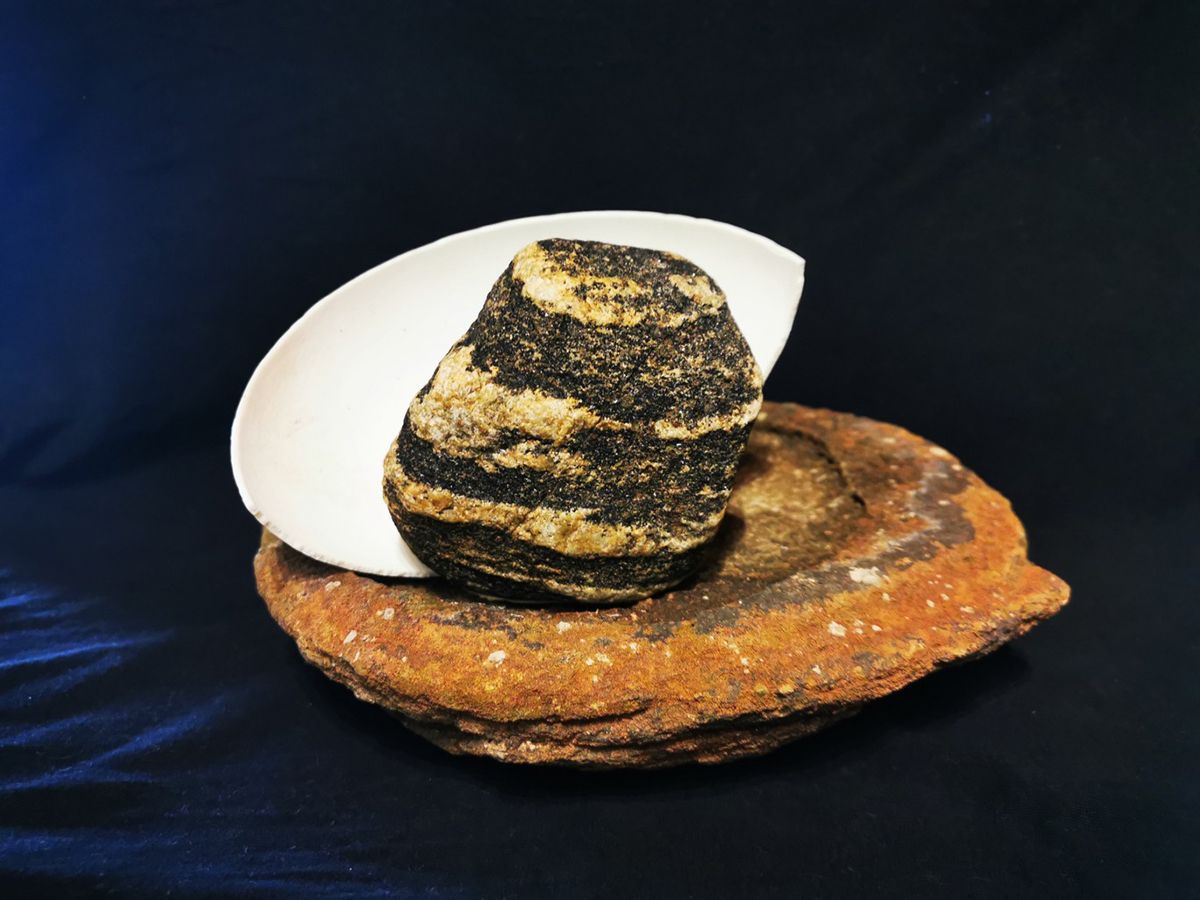
“Birth of Earth”
By Willem Pretorius
I call this my “Birth of Earth” rock. It is from the Barberton region in the north of South Africa and is believed to be amongst the most ancient rocks in the world at 3.5 billion years old. Scientists have known about them for decades and have studied the sequence of volcanic and sedimentary rocks as they are presumed to be Earth’s oldest and best preserved.
Just south of the town of Barberton is the Makhonjwa Mountains known as the Genesis of the World and on the way to becoming a Unesco World Heritage site. Maybe you know that all humans share an African heritage. But if you want to find out more about our planet’s earliest millennia, then Barberton is the place to visit because just south of this town, you’ll find some of the oldest evidence of life on Earth in these mountains.
Apart from the stunning natural beauty of the area, brimming with bird, animal, and plant life, you’ll see rock formations containing stromatolites and biomats. These are the first microfossil evidence of life on earth. There’s also evidence of bacterial microfossils, and when you look at some of the sedimentary rocks, you’ll see evidence of the oldest tidal environments on Earth.
I placed the stone in another very scarce rock found near the town of Williston. They are not part of the blackish rocky outcrops and lie amongst the bossieveld seemingly in groups, often in the middle of scattered shale mudstone remnants. Some are round but all have a depression on top like a water reservoir. This could be iron concretions, however the depression in the center maybe just an act of erosion. These iron concretion balls would have been standing exposed in the same position for a very long time. You find solid concretions and shell concretions. The difference between the two is the diffusion process. This is a shell concretion where the center still contains some original rock. The outer shell would be iron rich possibly specular Hematite and the inner is the lighter sandstone which is highly porous.
Next to it, I placed part of an ostrich egg that I cracked especially for the composition to add to the naming of the “Birth of Earth”.

